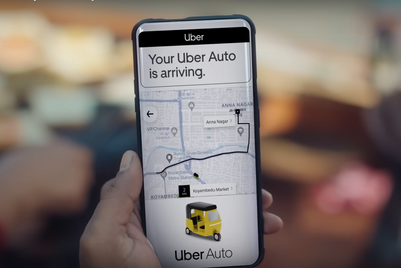Yesterday, a day before launching an Asia-wide campaign, Uber posted satellite image-style animations on its Facebook pages in several key markets, showing those Asian cities in their full glory of criss-crossing highways teeming with vehicles.
Working with Forsman & Bodenfors, the ride-hailing company has picked eight Asian cities— Singapore, Bangkok, Kuala Lumpur, Manila, Jakarta, Ho Chi Minh, Hong Kong and Taipei—for its campaign. The video spot was shot in Bangkok, the 12th most congested city in the world as rated on the INRIX Global Traffic Scorecard.
Speaking to Campaign, Eshan Ponnadurai, Uber's marketing director for APAC, emphasised that the campaign was driven by local insights despite its regional scale. "The campaign is very much about understanding consumers across Asia," he said. "They are all experiencing problems that are related to traffic. What you see in Jakarta may be different from Hong Kong, but the issue is the same." The cardboard boxes in the video are very much a humourous, metaphoric take of the huge amount of time consumers in Asia are on the road, he added.
Ponnadurai pointed out further localisations of the campaign. For example, the campaign for Jakarta, another city notorious for traffic congestion, is drawn from the insight that commuters spend 68 minutes on the road. Uber wants to 'unlock' the city by reducing the number of vehicles on the road by 2.5 million.
Given that the Uber cars on the road are certainly part of the traffic statistics, Ponnadurai maintained that the campaign was about creating conversation about what people feel about car ownership and how Uber can offer a solution. "I don't think it is about whether owning a car is the right thing, it is more about how we can use resources like private cars more efficiently," said Ponnadurai. "Consumers certainly see the value of ride sharing. This is why the campaign is called 'Ride together'."
The campaign goes live simultaneously in the selected cities today on social media, OOH, TV and digital platforms, as well as activation activities surrounding the box tailored to the markets. Uber riders in Jakarta can even purchase a box, with the proceeds going to charity.
"Even though Uber is 100% mobile, it makes sense to go into different channels, and [traffic] is a real world issue," said Ponnadurai.
Uber has a long-standing partnership with Forsman & Bodenfors.


.jpg&h=334&w=500&q=100&v=20250320&c=1)


.png&h=334&w=500&q=100&v=20250320&c=1)



.png&h=334&w=500&q=100&v=20250320&c=1)

.png&h=334&w=500&q=100&v=20250320&c=1)
.png&h=268&w=401&q=100&v=20250320&c=1)






.png&h=268&w=401&q=100&v=20250320&c=1)